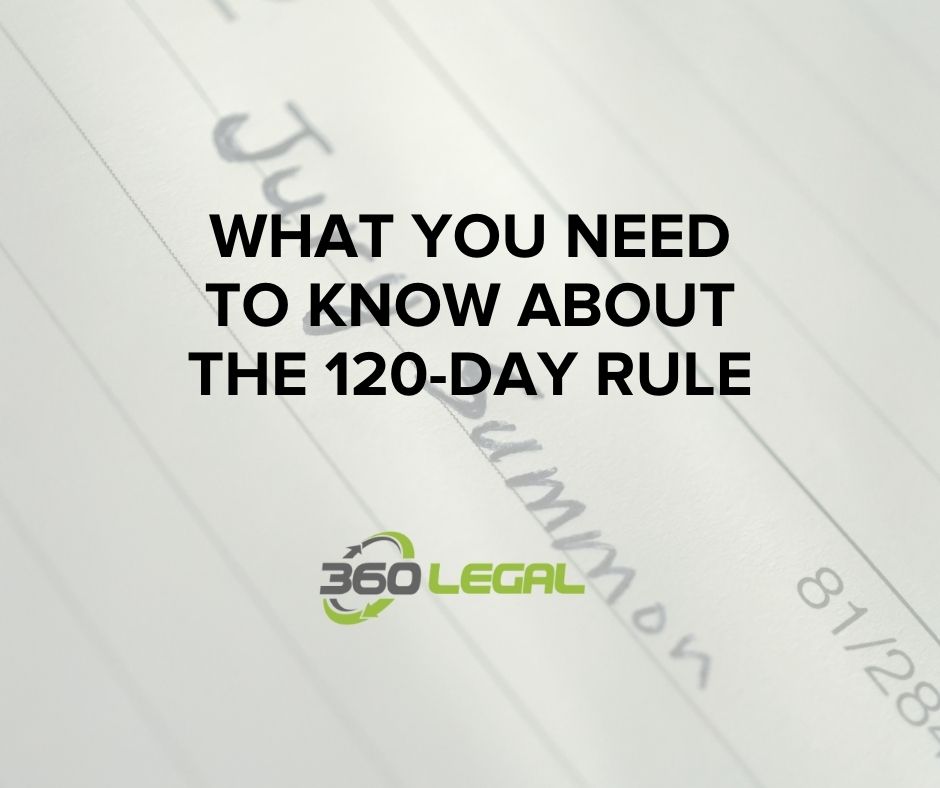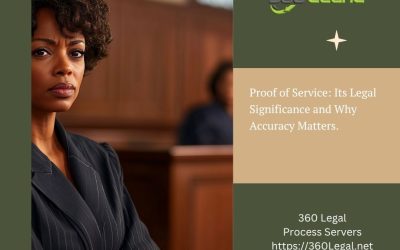Testing RSS Feeds.. ignore post.
Testing RSS Feeds.. ignore post.
WHAT YOU NEED TO KNOW ABOUT THE 120-DAY RULE

WHAT YOU NEED TO KNOW ABOUT THE 120-DAY RULE
(Adapted from Pg 91, Vol. 73, No. 6 June 1999 Gerald D. Schackow Trial Attorneys)
In Florida, According to Rule of Civil Procedure 1.070 (j), a complaint must be served on the defendant within 120 days of its filing. If it is not served within the time frame specified, a motion to dismiss is appropriate, and the case is dismissed without prejudice. So long as the statute of limitations has not expired, the complaint may be refiled. However, there is a problem if the complaint is not served within the statutory time period and the statute of limitations subsequently has not run. In this scenario, any such dismissal is extremely damaging to both the attorney and his or her client, and the lawyer is liable for malpractice.
However, there is a savior clause in the rule that states that if the plaintiff can demonstrate “good cause” why the complaint was not served within the 120-day time frame, the time frame will be extended to allow for appropriate service. The purpose of this article is to discuss how the courts view the various “good cause” arguments advanced by plaintiffs.
Historically
For many years, plaintiffs would simply file a complaint to extend the statute of limitations and then proceed to investigate and negotiate the case. In an effort to improve judicial efficiency, the Florida Supreme Court mandated in the 1980s that cases on dockets be handled and moved forward as soon as possible. The one-year failure to prosecute statute aided in this regard, and the various circuits used case management conferences and other tools to move cases forward. Fla. R. Civ. P. 1.070(j) was enacted in 1989 as another measure to expedite cases. All lawsuits must be served within 120 days of the filing of the initial pleading, according to Rule 1.070(j).
Plaintiffs’ attorneys were not used to this concept, and many of the early cases in which complaints were dismissed for failure to serve on time involved plaintiffs’ attorneys who simply forgot to serve the complaint after filing. In Berdeaux v. Eagle Pitcher, 575 So. 2d 1295 (Fla. 3d DCA 1990), the Third District faced a similar situation. In that case, the plaintiff’s attorney perfected service prior to the motion to dismiss hearing. According to the Berdeaux court, this situation should be treated similarly to a default, where if an answer is filed before the default is entered, the default is cured.
Around the same time, in Morales v. Sperry Rand, 578 So. 2d 1143 (Fla. 4th DCA 1991), the Fourth District Court faced the same issue of service not being perfected within 120 days. The Fourth District ruled that Rule 1.070 (j) should be enforced more strictly than the default rule, and that the trial court must look to the facts to determine good cause before granting a service extension. These cases of conflicting rulings resulted in the Florida Supreme Court issuing the Morales v. Sperry Rand, 601 So. 2d 538 (Fla. 1992) decision.
Morales v. Ayn Rand
In Morales, the Florida Supreme Court ruled that Rule 1.070(j) should be applied more strictly than the default rule. The Supreme Court ruled that, unlike in the default judgment rule, the plaintiff’s attorney could not cure the problem by perfecting service prior to the order of dismissal.
According to the facts in Morales, the plaintiffs’ attorneys waited 110 days before beginning service of process. At the time, the attorneys began the process by requesting that the summons be issued by regular mail from the clerk. The Morales’ attorneys did not have enough time after receiving the executed summons to serve the defendants within the 120-day time frame. The Supreme Court ruled that this was a “half-hearted” effort to serve the defendants and that the facts would not support a finding of “good cause.” The Supreme Court noted that this dismissal would be harsh, even though it was without prejudice, because the plaintiffs were unable to refile due to the statute of limitations running. The Morales decision established the precedent for trial and district courts to examine the facts of each case to determine whether “good cause” was established. The Florida Supreme Court also ruled that the trial court should have broad discretion in reviewing each case’s facts and determining whether “good cause” could be established for failing to serve the complaint within 120 days.
Morales’ successor
Since the Morales decision, 14 published opinions have revolved around the term “good cause.” These decisions can be divided into two categories: attempts at service cases and no attempts at service cases. The courts have been very liberal in finding a showing of “good cause” by the plaintiff in the attempts at service category when any attempt at service is made within the 120-day period. Plaintiffs’ counsel, on the other hand, made no timely attempts at service within 120 days in cases where a dismissal of the action was upheld for failure to serve within 120 days. Plaintiffs’ counsel in these cases made excuses for failing to make a timely attempt at service. These excuses were not deemed “good cause” by the courts.
No attempts to serve cases.
In Patterson v. Lowenstein, 686 So. 2d 776 (Fla. 4th DCA 1997), the Fourth District Court held that the plaintiffs’ claim that they were investigating the case after filing it was not good cause for the plaintiffs’ failure to make any attempts at service within the 120-day period.
Similarly, in Hodges v. Noel, 675 So. 2d 248 (Fla. 4th DCA 1996), the Fourth District held that if no attempts were made, or, as in Hodges, no attempts were made for 330 days, a motion to dismiss should be granted. In a slight twist on this theme, the Third District in Hernandez v. Page, 580 So. 2d 793 (Fla. 3d DCA 1991), held that the motion to dismiss should be granted because no service was attempted within eight months. The Hernandez court took plaintiffs’ argument that they were negotiating their claim as the reason for the delay in service into account. The court determined that a complaint was filed, negotiations took place, the complaint was voluntarily dismissed by the plaintiffs, and a new complaint was refiled but not served for eight months and no attempts were made to serve it. According to the Hernandez court, there were no negotiations on the amended complaint, only on the original complaint. As a “good cause” argument, the Third District may have left the door open for negotiations.
Cases with “Good Cause” and an Attempt at Service
Since the Morales decision in 1992, approximately 11 cases have been decided that define “good cause” and found enough “good cause” to defeat a motion to dismiss for failure to serve within the 120-day period. The common thread in all 11 cases is that the plaintiff’s attorney attempted to secure service of process within the 120-day period. For example, good cause was found when the plaintiff attempted to serve incorrect summonses, invalid complaints, or the wrong defendants within the 120-day period. 1
Two cases were determined to have “good cause” by the plaintiff when the defendants misled the plaintiff and an attempt to serve was made within the 120-day period based on this misinformation.
2 Three additional cases excuse the plaintiffs’ failure to serve on time because valid attempts were made during the 120-day period despite the fact that no service was obtained. 3
The First District Court of Appeal weighed ongoing negotiations and a waiver by the defendant against the requirement to serve within the 120-day period in Carlton v. Wal-Mart Stores, 621 So. 2d 451 (Fla. 1st DCA 1993). While the parties were negotiating, the plaintiffs’ attorney wrote to the defendant’s agent, stating that he would not serve the complaint as long as the parties were engaged in valid negotiations. The plaintiffs’ attorney also asked that the defendant notify him if they wanted the lawsuit served. The court determined that the plaintiffs established “good cause” under these facts, and the motion to dismiss was denied.
Gambino v. The Village of Oakbrook, 164 F.R.D. 271 (M.D. Fla. 1995), involved an unusual set of facts in which the plaintiff negotiated with the defendants for up to 117 days after filing his complaint. The plaintiff realized at that point that the case could not be settled and took immediate steps to serve the defendants. This included sending the summons (which had already been issued) to the sheriff of New York City via overnight mail. The summons was received by the sheriff within the 120-day period, but the defendants were not served until several weeks after the 120-day period had expired. The Gambino court determined that there was sufficient “good cause” to defeat a motion to dismiss based on the good faith negotiations, plaintiff’s attorney taking all reasonable steps to effectuate service within the 120 days, and delivery of the complaint and summons to the sheriff within the 120 days for service. The Gambino court went on to say, among other things, that the plaintiff had no control over when the defendant would be served by the sheriff after the summons was delivered. The court emphasized that the 120-day rule should be used as a tool for docket management, not as a tool of oppression.
Conclusion
Plaintiffs must make a concerted effort, rather than a half-hearted effort as in Morales, to serve within 120 days of the filing of the complaint in order to demonstrate “good cause.” The rule’s purpose is to prevent a plaintiff from filing a lawsuit and then taking no action to pursue the claim. 4
When some attempt at service is demonstrated, courts have ruled in favor of the plaintiff. The rule’s 120-day deadline was not intended to be enforced harshly or inflexibly. 5 However, if the plaintiffs fail to serve or “sleep on their rights,” the lawsuit may be dismissed. If this occurs, the plaintiff should still have time to refile.
1 Sneed v. H.B. Daniel Construction, 674 So. 2d 158 (Fla. 5th DCA 1996); Stoeffler v. Castoliga, 629 So. 2d 196 (Fla. 2d DCA 1993); Caban v. Skinner, 648 So. 2d 251 (Fla. 3d DCA 1994); Bankers Insurance Company v. Thomas, 684 So (Fla. 2d D.C.A. 1996).
Mid-Florida Associates v. Taylor, 641 So. 2d 182 (Fla. 5th D.C.A. 1994); Onett v. Ahola, 683 So. 2d 593 (Fla. 5th D.C.A. 1994). (Fla. 3d D.C.A. 1996).
3 Bice v. Metz Construction Co., 699 So. 2d 745 (Fla. 4th D.C.A. 1997); Ludwig v. Schwagel, 701 So. 2d 1256 (Fla. 5th D.C.A. 1994); Crews v. Shadburne, 637 So. 2d 979 (Fla. 5th D.C.A. 1994). (Fla. 1st D.C.A. 1994).
699 So. 2d 745, 4 Bice.
5 Floyd v. U.S., 900 F.2d 1045 (7th Cir. 1990).
Gerald D. Schackow is a lawyer in Gainesville who specializes in personal injury and wrongful death. In 1962, he received his B.A. from the University of Florida, and in 1965, he received his J.D. from the University of Florida College of Law. Mr. Schackow works with Stephen Mercadante, Lynn Schackow, and Catherine Schackow.
This article is adapted from the column as submitted on behalf of the Trial Lawyers Section, chaired by Richard A. Gilbert and edited by D. Keith Wickenden.
T: +1 (888) 360-legl (5345)
@: info@360legal.net
Author
We are Social!
Latest tweets
Popular Tags
Testimonials
"5 star service ! prompt serving, helpful, professional . "
"Mike is awesome. Our firm has hired him on several occasions and we are very happy with his work. His prompt serving, helpful, professional and always in communication. I recommend him highly! "
"360Legal provides speedy and easy to use Process Service that is flexible, and very transparent with nearly instant reporting. It is very helpful for us to be able to track the status of our process service jobs, especially when they are time sensitive. "
Latest News
-

RMAI 2021 Annual Conference RMAI Annual Conference
April 12-15, 2021 -

NATIONAL CREDITORS BAR ASSOCIATION 2020 SPRING CONFERENCE
May 19-21, 2021 -

ALFN ANSWERS 2021
Jul 18-21, 2021 -

Annual Convention and Expo
Oct. 17-21, 2021 -

Florida Association of Professional Process Servers 33rd Quarter Board Meeting/Professional Beach Getaway
Aug. 20-22, 2021












